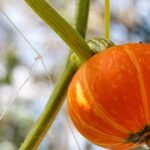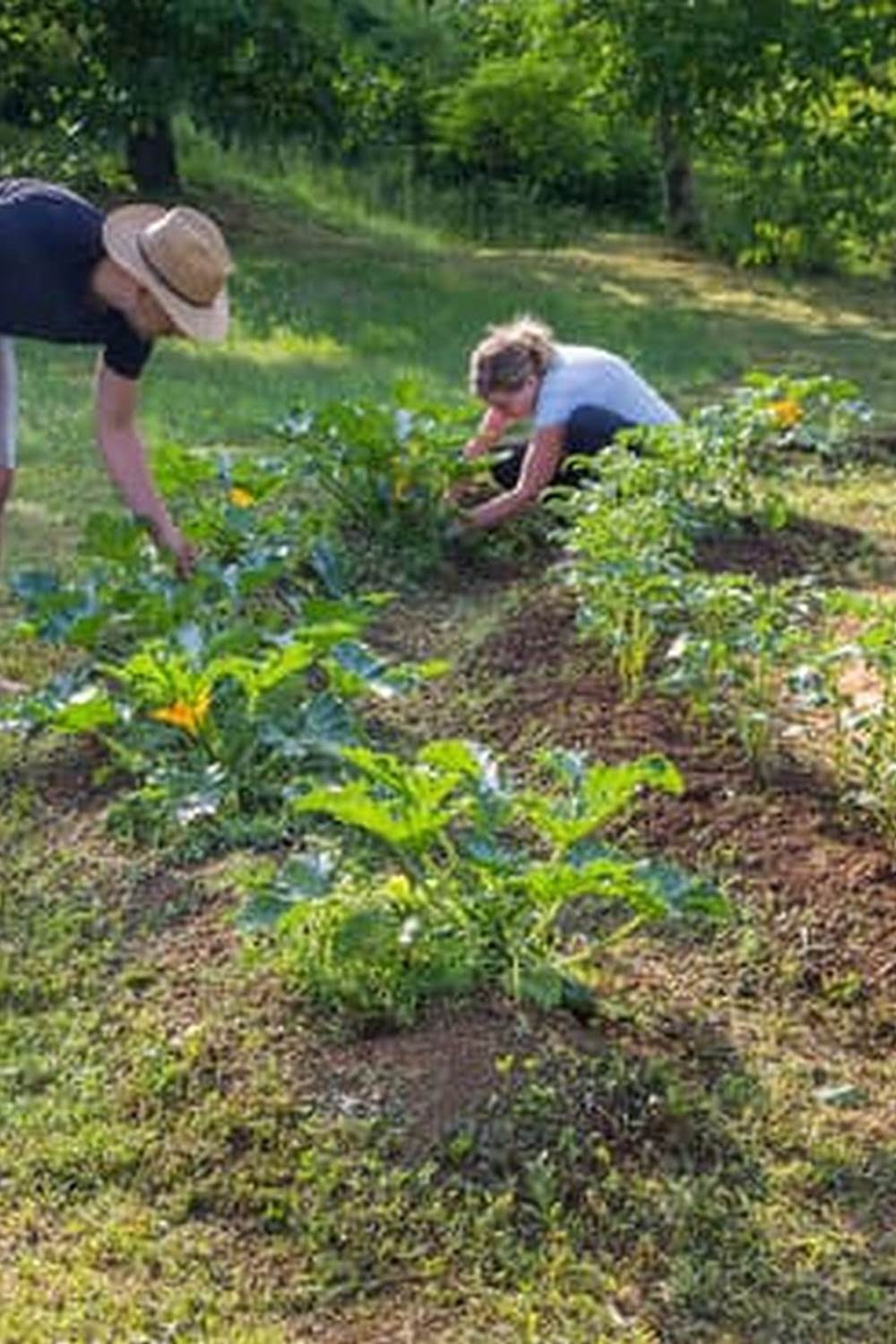Is newspaper safe for vegetable gardens? Many gardeners have debated the use of newspaper as a natural weed barrier and mulch in vegetable gardens. While it offers benefits such as weed suppression and moisture retention, there are also concerns about ink leaching, chemicals, and its impact on soil health. In this article, we will explore the use of newspaper in gardening, its potential impact on vegetable gardens, and provide insights from experts on best practices.
Using newspaper as a weed barrier and mulch in vegetable gardens has become increasingly popular among gardeners. It is seen as a cost-effective and environmentally friendly option for controlling weeds and conserving soil moisture. However, questions about the safety of using newspaper in vegetable gardens have arisen due to the presence of ink, chemicals, and their potential impact on plant health.
In this section, we will delve into the benefits of using newspaper in vegetable gardens, addressing concerns regarding its safety, and exploring alternatives that may be considered for effective garden maintenance. Additionally, we will provide valuable insights from gardening experts on how to safely incorporate newspaper into vegetable gardens while ensuring optimal plant growth and productivity.
Benefits of Using Newspaper in Vegetable Gardens
Newspaper can be a valuable and sustainable resource in vegetable gardens, serving as a natural weed barrier and aiding in moisture retention. Using newspaper in this way can have several benefits for gardeners, making it a popular choice for those seeking environmentally-friendly alternatives to traditional methods.
One of the main advantages of using newspaper in vegetable gardens is its effectiveness as a natural weed barrier. By layering newspaper around plant beds, gardeners can effectively smother weeds and prevent them from growing, reducing the need for chemical herbicides or constant manual weeding. This not only saves time and effort but also promotes healthier soil by reducing soil disturbance.
In addition to acting as a weed barrier, newspaper also helps retain moisture in the soil. When spread out over the garden bed, newspaper can help prevent evaporation, allowing the soil to retain more moisture.
This can be especially beneficial during hot and dry periods, helping to ensure that vegetable plants have an adequate water supply for optimal growth. The use of newspaper as a natural mulch also adds organic matter to the soil as it decomposes, improving overall soil health.
| Advantages | Description |
|---|---|
| Natural Weed Barrier | Newspaper layers around plant beds can effectively smother weeds and reduce the need for chemical herbicides or constant manual weeding. |
| Moisture Retention | Newspaper helps prevent evaporation, allowing the soil to retain more moisture, especially during hot and dry periods. |
| Soil Health | Newspaper acts as a natural mulch that decomposes over time, adding organic matter to the soil and improving overall soil health. |
Risks and Concerns
When considering using newspaper in vegetable gardens, it is important to address potential risks and concerns. While newspaper can be a cost-effective and natural way to suppress weeds and retain moisture in the soil, there are some factors that need to be taken into consideration to ensure the safety of the garden and the health of the plants.
1. Ink Leaching: One concern some gardeners have is the potential for ink leaching from the newspaper into the soil. Most newspapers today use soy-based or vegetable-based inks, which are considered safe for use in gardens. However, it is still advisable to check with your local newspaper company or printer to confirm the type of ink used before using it in your vegetable garden.
2. Chemicals: Another concern is the presence of chemicals or toxins in the newspaper that could potentially harm the soil or plants. While most newspapers are printed with safe materials, it is important to be cautious and choose newspapers from reputable sources that prioritize environmentally-friendly printing practices.
3. Impact on Soil Health: Some gardeners worry about how newspaper mulch may affect the overall health of their soil over time. When using newspaper as a weed barrier and mulch, it is crucial to ensure proper decomposition of the paper material so as not to hinder soil structure and nutrient availability for plant growth.
In addressing these concerns, it is essential to take certain precautions when using newspaper in vegetable gardens. By choosing the right type of newspaper and ensuring proper preparation and maintenance, it is possible to minimize any potential risks while reaping the benefits of this natural gardening method.
– When choosing newspapers for your vegetable garden, look for papers with black-and-white print only, as colored inks may contain harmful chemicals.
– Before applying newspaper in your garden, wetting them down can help prevent them from blowing away before you cover them with mulch or soil.
– To promote healthy decomposition of the paper material, consider adding organic compost or other organic matter on top of the layers of newspaper.
Types of Newspaper to Use
When considering the use of newspaper in vegetable gardens, it is important to carefully select the type of newspaper to use and prepare it properly for optimal results. Not all newspapers are created equal, and certain types may contain harmful chemicals or inks that can impact the health of your garden. Therefore, choosing the right newspaper and preparing it correctly is essential for ensuring that it is safe for your vegetable plants.
The best types of newspaper to use in vegetable gardens are those that are printed with soy-based ink or are simply black and white with no colored ink. Newspapers with colored ink may contain chemicals and dyes that can leach into the soil, posing potential risks to your vegetables. Additionally, avoid using glossy papers or those with a high sheen as they may have a coating that can be detrimental to the soil and plants.
Before using newspaper in your vegetable garden, it is crucial to prepare it properly. This involves removing any staples, tape, or plastic packaging from the newspapers to ensure that only the paper itself is used. It is also recommended to shred or crumple the newspaper before applying it as a mulch or weed barrier. By shredding or crumpling the newspaper, you create more surface area and allow for better water retention and air circulation within the soil.
Once you have selected the appropriate type of newspaper and prepared it accordingly, you can then proceed to use it effectively in your vegetable garden. Following these guidelines will help maximize the benefits of using newspaper while minimizing any potential risks associated with its use.
| Newspaper Type | Preparation |
|---|---|
| Black and white with soy-based ink | Remove any staples, tape, or plastic packaging; shred or crumple before use |
| Colored ink newspapers | Avoid use due to potential chemical leaching |
| Glossy papers with coatings | Avoid use due to potential harm to soil and plants |
Step-by-Step Guide
Using newspaper as a natural weed barrier and mulch in vegetable gardens can be an eco-friendly and cost-effective way to maintain the health and productivity of your plants. However, proper application and maintenance are essential to ensure that the newspaper is used effectively without causing any harm to the soil or the vegetables grown. Here is a step-by-step guide on how to use newspaper in vegetable gardens:
Prepare the Area
Before laying down newspaper in your vegetable garden, it’s important to prepare the area by removing any existing weeds and debris. This will create a clean surface for the newspaper to be applied and prevent any unwanted growth underneath.
Lay Down the Newspaper
Once the area is prepared, lay down sheets of newspaper over the soil around your vegetable plants. Ensure that there are no gaps between the sheets to provide maximum coverage. The newspaper will act as a barrier, preventing sunlight from reaching weed seeds and suppressing their growth.
Add Mulch
After laying down the newspaper, add a layer of organic mulch on top. This can be compost, straw, or shredded leaves. The mulch helps to weigh down the newspaper, keep it in place, retain moisture in the soil, and contribute to soil health as it breaks down over time.
Maintenance
Monitor the newspaper and mulch regularly to make sure they stay in place and continue to provide effective weed control. As the mulch decomposes, you may need to add more layers on top of it to maintain its thickness and efficacy. Additionally, check for any signs of mold or mildew underneath the newspaper, as this could indicate excess moisture retention.
By following these steps for using newspaper in vegetable gardens, you can effectively control weeds while promoting healthy plant growth without compromising soil health or safety for your vegetables.
Alternative Options
When it comes to maintaining a vegetable garden, using natural weed barriers and mulching materials is essential for promoting healthy plant growth and minimizing weed growth. While newspaper can be an effective option, there are alternative natural materials that can also serve as excellent weed barriers and mulches.
Here are some alternative options to consider for your vegetable garden:
1. Straw: Straw is a popular natural mulching material that helps retain moisture in the soil and suppress weed growth. It also breaks down slowly, adding organic matter to the soil over time.
2. Grass Clippings: Grass clippings make an excellent mulch and weed barrier when used in thin layers. They are rich in nitrogen and break down quickly, providing nutrients to the soil.
3. Wood Chips: Wood chips not only serve as a natural weed barrier but also add organic matter to the soil as they decompose. They are particularly beneficial for retaining soil moisture and regulating temperature.
4. Leaves: Shredded leaves can be spread over the soil to suppress weeds and provide insulation for the roots of vegetable plants. As they break down, they enrich the soil with nutrients.
5. Cardboard: Similar to newspaper, cardboard can be used as a weed barrier when laid on the soil surface. It is biodegradable and provides excellent weed suppression while allowing water and air to penetrate.
Consider these alternative options when choosing a natural weed barrier and mulching material for your vegetable garden, taking into account their availability, cost, and compatibility with your specific gardening needs.is newspaper safe for vegetable gardens.
Expert Tips and Recommendations
Consulting With Gardening Experts
Before using newspaper in your vegetable garden, it is advisable to seek advice from gardening experts or experienced horticulturists. They can provide valuable insights on the specific requirements of your garden, the type of soil you have, and any potential risks associated with using newspaper as a weed barrier and mulch. Consulting with experts can help ensure that you make informed decisions and take the necessary precautions to protect your vegetable garden.
Choosing Organic and Unprinted Newspaper
One of the best practices recommended by gardening experts is to use organic, unprinted newspaper for your vegetable garden. This type of newspaper is free from harmful chemicals, dyes, and inks that could potentially leach into the soil and affect the health of your plants. By opting for unprinted newspaper, you can minimize the risk of introducing toxins into your vegetable garden while still benefiting from its weed-suppressing and moisture-retaining properties.
Applying Newspaper Correctly
Another important tip from gardening experts is to apply newspaper correctly in your vegetable garden. This includes preparing the soil properly by removing any existing weeds or debris before laying down the newspaper. It’s also essential to wet the newspaper after laying it down to prevent it from blowing away in the wind. Proper application techniques can help maximize the benefits of using newspaper as a natural weed barrier and mulch without compromising soil health or plant growth.
By following these expert tips and best practices, you can enhance the use of newspaper in your vegetable garden while ensuring that it is a safe and beneficial addition to your gardening efforts. Seeking guidance from professionals, choosing the right type of newspaper, and applying it correctly are key elements in harnessing the potential benefits of this natural material while minimizing any potential risks or concerns.
Case Studies and Success Stories
In conclusion, the use of newspaper as a weed barrier and mulch in vegetable gardens is a practice that has been proven effective by numerous gardeners. While there are concerns about ink leaching, chemicals, and potential impact on soil health, choosing the right type of newspaper and preparing it properly can mitigate these risks. The benefits of using newspaper, such as natural weed suppression and moisture retention, make it a viable option for sustainable gardening.
By utilizing newspaper in vegetable gardens, gardeners can reduce the need for synthetic weed barriers and chemical-based solutions. This not only promotes a more natural and organic approach to gardening but also contributes to environmental sustainability. With proper application and maintenance, newspaper can contribute to the overall health and productivity of vegetable gardens while minimizing the reliance on harmful substances.
Ultimately, while there are alternative options for natural weed barriers and mulching materials, the use of newspaper in vegetable gardens showcases real-life success stories of thriving plants, improved soil health, and reduced maintenance. As with any gardening practice, it is important to stay informed about best practices and seek advice from experts in order to make the most informed decisions for your vegetable garden.
So when asking yourself “is newspaper safe for vegetable gardens? “, rest assured that with careful consideration and proper implementation, it can indeed be a beneficial addition to your gardening routine.
Frequently Asked Questions
Can I Use Newspaper in My Vegetable Garden?
Yes, you can use newspapers in your vegetable garden as a form of mulch. It helps control weeds, retain moisture, and regulate soil temperature. Newspaper also eventually breaks down, adding organic matter to the soil.
Is Newspaper Ink Toxic to Soil?
Most newspaper ink today is made from soy-based or vegetable-based materials that are not toxic to soil. In fact, the amount of ink used on newspaper is minimal and should not cause any harm to your garden soil.
Is Newspaper Better Than Landscape Fabric?
Whether newspaper is better than landscape fabric depends on your specific needs and preferences. Newspaper is biodegradable and can improve soil health as it breaks down, while landscape fabric is durable and provides longer-lasting weed control but does not contribute to soil health.

If you’re looking to get into vegetable gardening, or are just looking for some tips on how to make your current garden better, then you’ve come to the right place! My name is Ethel and I have been gardening for years. In this blog, I’m going to share with you some of my best tips on how to create a successful vegetable garden.





